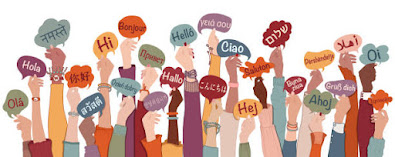First Language Acquisition VS Second Language Acquisition
As I reflect on my own experience with language acquisition, I can think about my acquisition of English as my first language and French as my second language. As a child, English was the language that I had the most exposure to; it was the language used at home and the one which was used in educational settings. Therefore, most of my knowledge of the language came from the interactions that I had with those around me such as my family and fellow peers. Through conversations and reading books, I was able to learn English and use it fluently and it became the first language that I learnt. When I began school, I attended an English school, but I was in the French Immersion program, which enabled me to have a greater exposure to the French language. It was at this time that I began to acquire my second language, and through interactions and media, I successfully learnt the language. Until now, I still have a good knowledge of the French language and use it effectively not only through my interactions with others, but in my daily life activities. Learning French as a second language was not always the easiest, as learning a second language is quite different than learning a first language.
If I think back to my personal experience with language acquisition, one of the influences that my L1 had on my L2 was that I would often overgeneralize patterns that would be used in the English language and apply it to my knowledge of French. This is related to a theoretical concept that I have seen in our course textbook, which reflects how learners may use patterns in their L1 and apply them to L2 syntax, leading them to make errors due to overgeneralization (Lightbown & Spada, 2021). For example, something that I was often having trouble with was how certain verb endings in English were not consistent to the verb endings in French. Another important difference between my first language acquisition and second language acquisition was how much exposure time I had. Younger L1 learners are often exposed to the language for many hours a day at home, on the playground, through family interactions but L2 learners are less likely to have high exposure to the target language and may only be exposed to it for a few hours in a classroom setting (Lightbown & Spada, 2021). As a child, I had much exposure to the English language through my home life, however, I mostly gained exposure to French during the time that I spent at school in the classroom by reading books or through media exposure (shows, movie clips etc.).
Based on my comparison of my first and second language acquisition, I would suggest providing as much exposure to the learners’ second language as possible to help them gain that knowledge on the target language. Learning a second language is difficult, but hearing others use the language can help not only boost learners’ confidence, but also encourage the growth of their language skills. In addition, as a language teacher I would create activities for the learners that would be fun and interactive so that they are encouraged to use the target language and do so in relevant, engaging ways rather than through typical teacher-centered instruction. I believe that helping learners acquire a second language is such an important role, and it is our job to ensure that these learners consistently feel at ease throughout their learning process.
References:
Lightbown, P. M., & Spada, N. (2021). How languages are learned (5th ed.). Oxford University Press.



Comments
Post a Comment